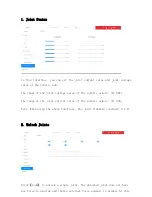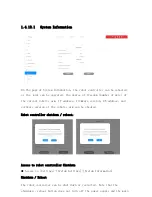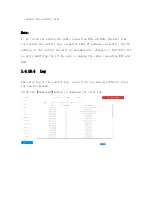
trajectory planning, which needs to be solved by inverse kinematics.
Therefore, there may be no solution, multiple solutions, and approximated
solutions; and due to the nonlinear relationship between the joint space
and Cartesian space, the joint motion may exceed its maximum speed and
acceleration limits.
1.5.6.2
TCP Coordinate System
The default TCP coordinate system is defined at the centre point of the
end flange of the robotic arm, and it is the result of rotating [180°,
0°, 0°] around the X/Y/Z-axis of the base coordinate system in order.
The spatial orientation of the TCP coordinate system changes according to
the changes of the joint angles.
●
Roll/Pitch/Yaw respectively rotates around X/Y/Z of the base
coordinate system, and the final TCP orientation is the result of the
three rotations in exact order. The robotic arm will always choose the
shortest way to reach target orientation. In particular, it is
important to strictly control the magnitude of the deflection angle
between the two points to control the direction of rotation, and if
necessary, insert a third point between the two points. As shown in
figure 6.4, if a deflection is needed from position point A to point B,
the robotic arm moves in the direction of α angle.
If the robotic
arm needs to be moved in the direction of the β angle, a new position
















































